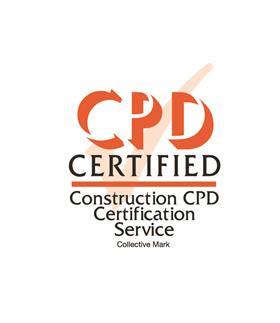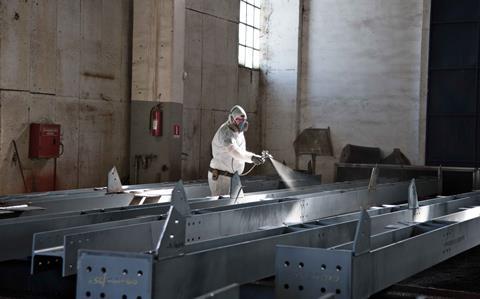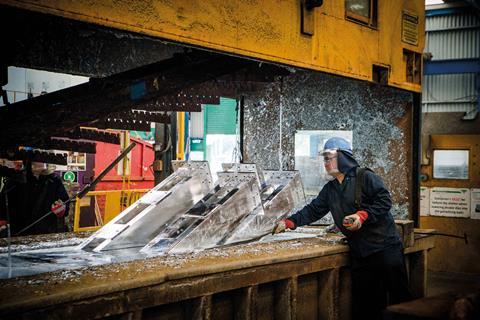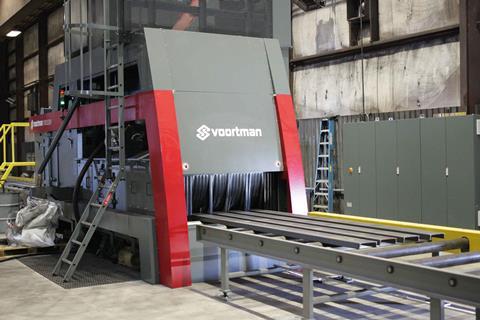This CPD, sponsored by Steel for Life, looks at how corrosion affects steel and how the lifespan of structures can be maximised by protecting them against the elements, from surface preparation through to coating and maintenance

CPD CREDITS: 60 MINUTES
DEADLINE: 22 NOVEMBER 2019
For more information about Assemble Media Group’s CPD distance-learning programme, click here


Introduction
Cost-effective corrosion protection of structural steelwork should present little difficulty for common applications and environments if the factors that affect durability are recognised at the outset.
Many steel structures have been in constant use and performed satisfactorily for many years, even in adverse conditions. The first major iron structure, the Iron Bridge across the River Severn in Shropshire, was built in 1781 and is still open to pedestrians. The Forth rail bridge near Edinburgh was opened in 1890 and still carries trains services in 2019.
Engineers and developers building such structures using modern steel materials are more aware of the durable protective coatings available, which when used appropriately allow extended maintenance intervals and improved performance.
This CPD will look at how corrosion affects steel and what can be done to protect structures from the elements, from surface preparation through to coating and maintenance.
Corrosion of structural steel
The corrosion of structural steel is an electrochemical process that requires the simultaneous presence of moisture and oxygen. The iron present in the steel is oxidised to produce rust, which occupies approximately six times the volume of the original material consumed in the process. In the absence of water or oxygen, corrosion does not occur.
As well as general corrosion, various types of localised corrosion can also occur: bimetallic corrosion, pitting corrosion and crevice corrosion. However, these tend not to be significant for structural steelwork.

What dictates the level of corrosion protection required?
The key to success lies in recognising the corrosivity of the environment to which the structure will be subjected and in defining clear and appropriate coating specifications.
The optimum protection treatment – which combines appropriate surface preparation, suitable coating materials, required durability and minimum cost – is achievable using modern surface treatment technology.
The rate at which the corrosion process progresses depends on a number of factors relating to the microclimate immediately surrounding the structure, principally the time of wetness (the amount of time a metal surface remains wet during atmospheric exposure) and the level of atmospheric pollution. Because of variations in atmospheric environments, data on corrosion rates cannot be generalised. However, environments can be broadly classified and the corresponding measured steel corrosion rates provide a useful indication of likely corrosion rates.
When steel is in a dry-heated interior environment, the risk of corrosion is insignificant and no protective coating is necessary. Conversely, a steel structure exposed to an aggressive environment needs to be protected with a high-performance treatment and may need to be designed with maintenance in mind if extended life is required.
Influence of design on corrosion
The design and detailing of a structure can affect the durability of any protective coating applied to it. Structures designed with many small structural components and fasteners are more difficult to protect than those with large flat surfaces. The key issues to consider include:
- Access for coating application and maintenance
- Avoidance of moisture and debris traps
- Avoidance or sealing of crevices
- Drainage and ventilation to minimise the time of wetness
- Careful management of contact with other materials.
Surface preparation
Surface preparation is the essential first stage treatment of a steel substrate before the application of any coating. It is generally accepted as the most important factor affecting the total success of a corrosion protection system.
The performance of a coating is significantly influenced by its ability to adhere properly to the substrate material. The initial surface condition of steel can vary in terms of the amount of residual millscale – a thin layer of iron oxides that forms on the steel surface during the process of hot rolling of the plates and sections – and the degree and prevalence of initial rusting. The greater the initial rusting, the more unsatisfactory a base it is upon which to apply modern, high-performance protective coatings.
Blast cleaning
A range of methods of preparation and grades of cleanliness exist, but by far the most significant method used for the thorough cleaning of millscaled and rusted surfaces is abrasive blast cleaning.
The standard grades of cleanliness for abrasive blast cleaning in accordance with ISO 8501-1 are:
- Sa 1 – light blast cleaning
- Sa 2 – thorough blast cleaning
- Sa 2½ – very thorough blast cleaning
- Sa 3 – blast cleaning to visually clean steel
The surface preparation process not only cleans the steel but introduces a suitable surface profile and improves the amplitude to receive the protective coating. High-build paint coatings and thermally-sprayed metal coatings need a coarse angular surface profile to provide a mechanical key. This is achieved by using grit abrasives. Shot abrasives are used for thin film paint coatings, such as prefabrication primers. A very wide range of abrasives is available. These can be non-metallic, such as metal slags, aluminium oxide and so on, or metallic, such as steel shot or grit.
The particle size of the abrasive material is also an important factor that affects the rate and efficiency of cleaning. In general terms, fine grades are efficient in cleaning relatively new steelwork, whereas coarse grades may be required for heavily corroded surfaces. The removal of rust from pitted steel is more easily done by fine grades and, depending upon the condition of the steel surface, a mixture of grades may be required initially to break down and remove millscale and clean into pitted areas.
After abrasive blast cleaning, it is possible to examine for surface imperfections and surface alterations caused during fabrication processes such as welding. Certain surface imperfections introduced during the original processing of the steel may not be detrimental to the performance of a coating in service, particularly for structures in relatively low-risk environment categories.
However, depending upon the specific requirements of the structure, it may be necessary to carry out additional surface treatments to remove surface imperfections on welds and cut edges, as well as soluble salts to produce an acceptable surface condition for painting.

Acid pickling
Acid pickling involves immersing the steel in a bath of suitable inhibited acids that dissolve or remove the millscale and rust but do not appreciably attack the exposed steel surface. The cleaning can be 100% effective. Acid pickling is normally only used for structural steel intended for hot dip galvanizing.
Paint coatings
Paint coatings for steel structures have developed over the years to comply with industrial environmental legislation and in response to demands from bridge and structure owners for improved durability performance. A paint consists of a pigment, dispersed in a binder, and dissolved in a solvent. The most common methods for the classification of paints is either by pigmentation or by binder type.
A modern paint system usually comprises a sequential coating application of paints, or alternatively paints applied over metallic coatings to form a “duplex” coating system. Protective paint systems usually consist of primer, intermediate/ build coats and finish coats. Each coating “layer” in any protective system has a specific function. The different types are applied in a particular sequence of primer followed by intermediate/ build coats in the shop, and finally the finish coat (or top coat) either in the factory or on site.
Prefabrication primers are used on structural steelwork immediately after blast cleaning to maintain the reactive blast cleaned surface in a rust-free condition through the fabrication process until final painting can be undertaken. These types of primers are not used before the application of thermally sprayed coatings.
The method and conditions of application of paint systems have a significant effect on the quality and durability of the coating. Standard methods used to apply paints to structural steelwork include application by brush, roller, conventional air spray and airless spray/ electrostatic airless spray.
Airless spray has become the most commonly used method of applying paint coatings to structural steelwork under controlled shop conditions. Brush and roller application are more commonly used for site application, although spray methods are also used. “Stripe” coatings applied to edges and sharp corners are usually applied by brush.
Metallic coatings
There are four commonly-used methods of applying metal coating to steel surfaces. These are hot dip galvanizing, thermal spraying, electroplating and sherardising. The latter two processes are not used for structural steelwork but are utilised for fittings, fasteners and other small items. In general, the corrosion protection afforded by metallic coatings is not greatly influenced by the method of application – the choice of coating metal used and how thick it is are more important.

Hot dip galvanizing
Hot dip galvanizing is a process that involves immersing the steel component to be coated in a bath of molten zinc at about 450°C, after pickling and fluxing, and then withdrawing it. The immersed surfaces are uniformly coated with zinc alloy and zinc layers that form a metallurgical bond with the substrate. The resulting coating is durable, tough, abrasion-resistant, and provides cathodic sacrificial protection to any small damaged areas where the steel substrate is exposed. Cathodic sacrificial protection sees the metal used in the sacrificial element corrode instead of the base metal. The typical minimum average coating thickness for structural steelwork is 85µm.
Thermally sprayed metal coatings
Thermally sprayed coatings of zinc, aluminium and zinc-aluminium alloys can provide long-term corrosion protection to steel structures exposed to aggressive environments. The metal, in powder or wire form, is fed through a particular type of spray gun containing a heat source, which can either be an oxygas flame or an electric arc. Molten globules of the metal are blown by a compressed air jet onto the previously grit blast-cleaned steel surface. No alloying occurs – the coating consists of overlapping platelets of metal and is porous. The pores are subsequently sealed by applying a thin organic coating that penetrates the surface. It is essential that the sealer completely satisfies the filling of all porosity in the metal coating.
The adhesion of sprayed metal coatings to steel surfaces is considered to be essentially mechanical in nature. It is therefore necessary to apply the coating to a clean roughened surface. Blast cleaning with coarse grit abrasive is normally specified.
Appropriate specifications
The overall success of a protective coating scheme starts with a well prepared specification. This is an essential document that is intended to provide clear and precise instructions to the contractor on what is to be done and how it is to be done. The specification should be drafted by someone with appropriate technical expertise and should be clear as to what is required, as well as what is practical and achievable.
It should be written in a logical sequence, starting with surface preparation, going through each paint or metal coat to be applied and finally dealing with specific areas, for example, welds. It should also be as brief as possible, consistent with providing all the necessary information. The most important items of a specification are as follows:
- Metal dressing to remove sharp edges, projections, etc, and steel contamination
- The method of surface preparation and the standard required
- The maximum interval between surface preparation and subsequent priming or metal coating
- The types of paint or metallic coatings to be used, supported by relevant standards
- The method/s of application to be used
- The number of coats to be applied and the interval between coats
- The wet and dry film thickness for each coat
- Where each coat is to be applied – in a factory or on site – and the application conditions that are required in terms of temperature, humidity, etc
- Details for treatment of welds, and bolted connections, etc
- Rectification procedures for damage, etc.
Inspection and quality control
An inspection forms an integral part of quality control. Its purpose is to check that the requirements of the specification are complied with and to provide a report, complete with proper records, to the client. One of the greatest assets to the coating inspector is a clearly written specification that can be referred to without any reason for doubt.
The appointment of an appropriately qualified third-party inspector should be seen as an investment in quality and not just an additional cost. Inspection of the processes, procedures and materials required for the protective coating of steel structures is vital, since a major error in even one operation cannot be easily detected after the next operation has been carried out. If not rectified immediately, this aspect can significantly reduce the expected life to first maintenance.

How to take this module
Assemble Media Group’s CPD distance-learning programme is open to anyone seeking to develop their knowledge and skills. Each module also offers members of professional institutions an opportunity to earn between 30 and 90 minutes of credits towards their annual CPD requirement.
This article is accredited by the CPD Certification Service. To earn CPD credits, read the article and then click the link below to complete your details and answer the questions. You will receive your results instantly, and if all the questions are correctly answered, you will be able to download your CPD certificate straight away.
CPD CREDITS: 60 MINUTES
DEADLINE: 22 NOVEMBER 2019
Privacy policy
Information you supply to Assemble Media Group Limited may be used for publication and also to provide you with information about our products or services in the form of direct marketing by email, telephone, fax or post. Information may also be made available to third parties. Assemble Media Group Limited may send updates about Building CPD and other relevant Assemble Media Group Limited products and services. By providing your email address you consent to being contact by email, telephone, fax or post by Assemble Media Group Limited or other third parties. If at any time you no longer wish to receive anything from Assemble Media Group Limited or to have your data made available to third parties, contact the Data Protection Coordinator at building@building.co.uk. View our full privacy policy here




























No comments yet